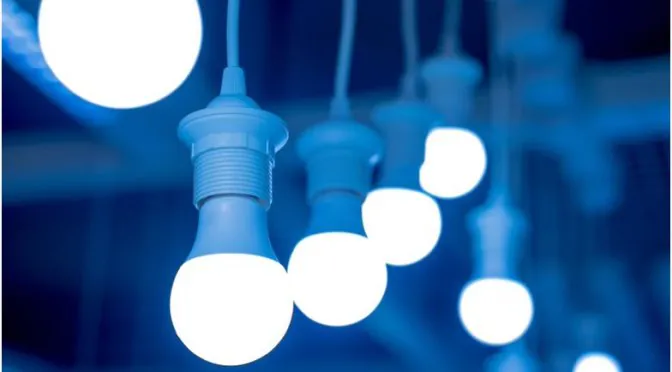As the global LED lighting market continues to grow, the rising adoption of smart lighting systems has become one of the major trends facilitating the recent growth of the market. LED lights are more efficient in terms of energy consumption, while LED bulbs and laps also have longer lifetime compared to conventional incandescent bulbs, therefore LED lights have been rapidly replacing incandescent and fluorescent light sources. Due to its numerous benefits, LED lighting is now widely adopted in various of sectors for different applications, such as residential lighting, general lighting, building illumination, aviation lighting, automotive headlights, advertising billboard, traffic signals, and medical devices. A smart lighting system has become the latest LED lighting application that will drive the growth of the global LED lighting market over the next few years.
Global LED Lighting Market Overview
According the latest market report from Technavio, the global LED market size will grow USD 23.98 billion from 2018 to 2022, with market growth expected to accelerate at a CAGR of nearly 16% during the forecast period. One of the key factors contributing to the growth of the global LED lighting market is the declining manufacturing cost of LEDs. The manufacturing cost of LEDs has declined since 2012 and will continue to do so during the forecast period primarily because of the declining ASP of chips and components used in the manufacturing process.
Meanwhile, the installation of the LED lamps and fixtures across all application segments are driven by the decrease in the installation costs. Megacities concentrate on investing in infrastructure development to meet the needs of the growing population. Governments of these countries are planning to install energy-efficient lighting sources to reduce electricity consumption. This will lead to the growth of the LED lighting market over the near future.
The Smart Lighting Systems: Latest Trend of the Global LED Lighting Market
Thanks to today’s technological advances, such as blue tooth, IoT, and cloud computing, the concept of smart homes has become a reality. With more and more features for smart homes being implemented in common households, there is a growing demand for smart LED lighting systems that can be connected with other electronic devices and can be controlled remotely. Smart lighting systems, powered by LED lightings, is also expected to offer lucrative opportunities for LED applications for both commercial and industrial purposes.
The smart lighting system is one of the most advanced lighting technologies and energy management systems in today’s lighting market. Sensors and automated control functions are built into every luminaire of the smart lighting system to monitor and react to occupancy, pre-selected light levels, and changes in ambient daylight levels.
Automated sensing functionality is one of the key features that incorporates to reduce energy consumption and increase controls factor in compliance with users’ needs. As a result, smart lighting systems are highly efficient, intelligent, and they can also can be easily re-configured to adapt the environment changes or users’ needs. Whatever the application is, the smart lighting system can deliver automatic energy savings combined with outstanding flexibility to provide better user experience.
Many of the world’s leading LED lighting manufacturers are also integrating IoT with their LED lighting solutions to collect data and record using patterns to create better lighting experience for users. By using a smart lighting system, the lighting can be automatically switched on or off, or lower its intensity, thereby achieving high power savings. Many smart lighting systems today can also set lighting schedules and control the brightness and colour temperature of the LED lights with the help of remote control and automation technologies.
The latest development of LED lighting market is seeing a growing number of smart lighting system companies focusing on offering human centric lighting solutions. Research have shown that our energy level, mood, and sense of alertness or sleepiness is controlled by a circadian rhythm, which is regulated by the brain based on light signals from the environment. Human centric lighting can adapt its light colour and intensity throughout the course of the day to create a circadian friendly lighting sequence, thus, improving the mood and increasing the productivity of an individual.
Read Technavio’s Research Report for More Information about Smart Lighting System and Global LED Lighting Market
Technavio’s LED Lighting Market Report 2018-2022 provides an in-depth analysis of the market size, market trends, driving factors, challenges, competitive landscape and the market share of LED lighting companies.
Technavio has been closely monitoring the latest LED lighting market trends to create an in-depth portfolio of LED market research reports. These reports help our clients identify opportunities within the market and develop effective strategies to optimize their market positions. Take a look at Technavio’s LED Lighting Market Research Library and download your free sample report today.
For more market intelligence in the global LED market, check this following report:



